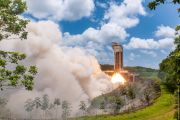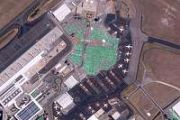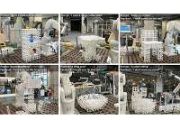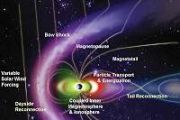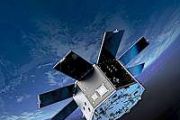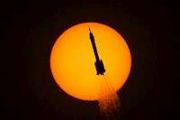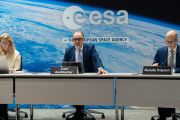
Copernical Team
First Spectrum: Strongest biosignature signal yet found on exoplanet
 Astronomers have reported their most compelling evidence to date of potential biological activity on a planet beyond our solar system, though they emphasize further verification is needed. Using the James Webb Space Telescope (JWST), a research team led by the University of Cambridge identified the spectral presence of dimethyl sulfide (DMS) and/or dimethyl disulfide (DMDS) in the atmosphere of exoplanet K2-18b.
Astronomers have reported their most compelling evidence to date of potential biological activity on a planet beyond our solar system, though they emphasize further verification is needed. Using the James Webb Space Telescope (JWST), a research team led by the University of Cambridge identified the spectral presence of dimethyl sulfide (DMS) and/or dimethyl disulfide (DMDS) in the atmosphere of exoplanet K2-18b. A roadmap for obtaining first sample returns from Mercury and Venus
This request seems a bit unusual, so we need to confirm that you're human. Please press and hold the button until it turns completely green. Thank you for your cooperation!
Press and hold the button
If you believe this is an error, please contact our support team.
185.132.36.159 : 45d5d352-0815-4da9-908e-0e6ada62
Forest mission sealed within rocket fairing for liftoff

With the launch of ESA’s Biomass satellite scheduled for 29 April, preparations at Europe’s Spaceport in Kourou, French Guiana, have reached a key milestone. The satellite has now been sealed inside the protective fairing of the Vega-C rocket – now hidden from view, the satellite is almost ready for its journey into space.
Hubble offers a new view of Sombrero galaxy
 Image:
Sombrero Galaxy
Image:
Sombrero Galaxy Space technologies find new life on Earth

Each year, cutting-edge technologies developed by the European Space Agency (ESA) for its complex missions and scientific discoveries find new life in applications used to benefit Earth and improve our daily lives.
From 9–13 April, ESA was guest of honour at the 50th International Exhibition of Inventions Geneva in Switzerland with more than 1000 inventions, which attracted 30 000 visitors from the public. ESA showcased its new technologies and applications that have been invented for space missions and patented for use in and outside the space arena.
Momentus inks five-year manufacturing deal with Velo3D
 Momentus Inc. (NASDAQ: MNTS), a U.S. space infrastructure company, has signed a five-year master services agreement with additive manufacturing leader Velo3D, Inc. (OTC: VLDX). This partnership marks a strategic effort to accelerate the production of space hardware using cutting-edge 3D printing technology.
The agreement, structured as an all-stock transaction and disclosed in a recent 8-K
Momentus Inc. (NASDAQ: MNTS), a U.S. space infrastructure company, has signed a five-year master services agreement with additive manufacturing leader Velo3D, Inc. (OTC: VLDX). This partnership marks a strategic effort to accelerate the production of space hardware using cutting-edge 3D printing technology.
The agreement, structured as an all-stock transaction and disclosed in a recent 8-K Scientists uncover why carbon-rich space rocks rarely reach Earth
 A comprehensive international study may finally explain why carbon-rich meteorites, which are thought to contain key ingredients for life, are so rarely found on Earth despite being common in space.
Scientists from Curtin University's School of Earth and Planetary Sciences, the International Centre for Radio Astronomy Research (ICRAR), the Paris Observatory, and several other institutions
A comprehensive international study may finally explain why carbon-rich meteorites, which are thought to contain key ingredients for life, are so rarely found on Earth despite being common in space.
Scientists from Curtin University's School of Earth and Planetary Sciences, the International Centre for Radio Astronomy Research (ICRAR), the Paris Observatory, and several other institutions Outpost awarded contract to develop reentry shield tech for space-based cargo delivery
 Outpost Technologies Corporation (Outpost Space), a leader in reusable space logistics platforms, has secured a $1.8 million contract from the U.S. Space Force under the SPACEWERX Small Business Innovation Research (SBIR) initiative. The award, granted through the ICED-T (Innovative Cargo Exoatmospheric Delivery Technology) topic, supports Outpost's Shielding Technology for Exoatmospheric Experi
Outpost Technologies Corporation (Outpost Space), a leader in reusable space logistics platforms, has secured a $1.8 million contract from the U.S. Space Force under the SPACEWERX Small Business Innovation Research (SBIR) initiative. The award, granted through the ICED-T (Innovative Cargo Exoatmospheric Delivery Technology) topic, supports Outpost's Shielding Technology for Exoatmospheric Experi Rocket Lab tapped for major defense contracts to advance hypersonic testing
 Rocket Lab USA, Inc. (Nasdaq: RKLB), a prominent player in global launch services and space systems, has been selected to participate in expansive defense initiatives by both the United States and United Kingdom to support the advancement of hypersonic technologies using its HASTE launch vehicle and engineering capabilities.
The U.S. Air Force has brought Rocket Lab onboard its $46 billion
Rocket Lab USA, Inc. (Nasdaq: RKLB), a prominent player in global launch services and space systems, has been selected to participate in expansive defense initiatives by both the United States and United Kingdom to support the advancement of hypersonic technologies using its HASTE launch vehicle and engineering capabilities.
The U.S. Air Force has brought Rocket Lab onboard its $46 billion NASA prepares to launch space-based quantum gravity sensor
 In a major step forward for quantum sensing and Earth science, NASA is preparing to fly the first quantum gravity sensor in space. Developed in partnership with academic institutions and private industry, the instrument is designed to measure variations in Earth's gravity with unprecedented precision. The effort is funded by NASA's Earth Science Technology Office (ESTO) and could revolutionize h
In a major step forward for quantum sensing and Earth science, NASA is preparing to fly the first quantum gravity sensor in space. Developed in partnership with academic institutions and private industry, the instrument is designed to measure variations in Earth's gravity with unprecedented precision. The effort is funded by NASA's Earth Science Technology Office (ESTO) and could revolutionize h 












